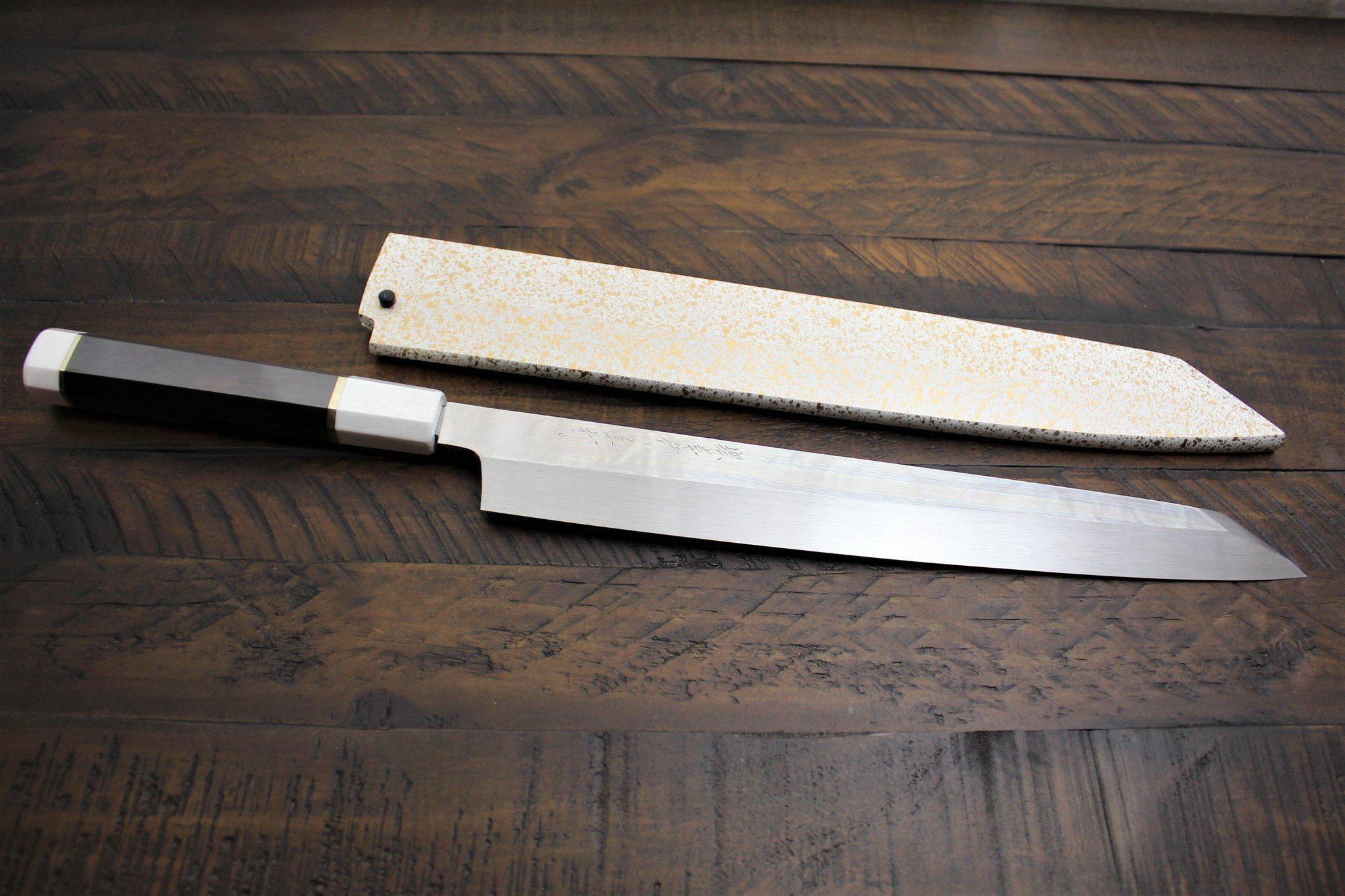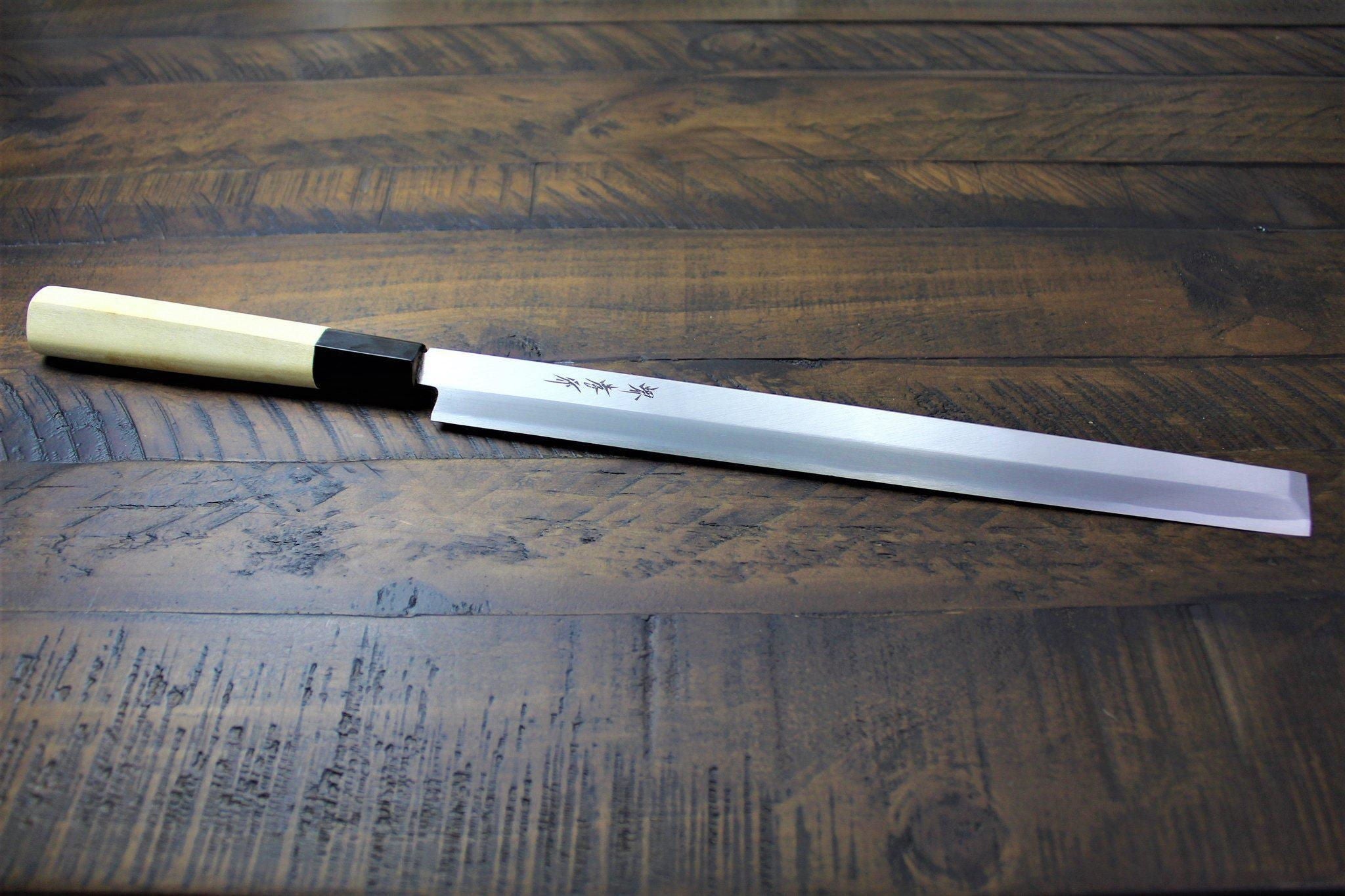
High Carbon Steel Knives - Shirogami & Aogami 1 vs 2
Many forums and discussions can be found regarding the pro’s and con’s of Shirogami and Aogami high carbon steel variants. Shirogami and Aogami come in different chemical compositions, generally denoted as #1, #2, and #3. For those new to the discussion, Shirogami is also known as White Steel, so Shirogami 1 would be interchangeable with White Steel 1. The number is indicative of the chemical composition, with #1 having the highest percentage of carbon, #2 the second highest, etc. (See our earlier article about Shirogami vs Aogami for more info on the differences.)
Article: High Carbon Steel Kitchen Knives - Shirogami vs Aogami
In general, the higher the carbon content, the harder the metal and the sharper the potential edge. But, the harder the metal and higher the carbon, the more brittle the metal becomes. Shirogami and Aogami are some of the hardest metals to forge due to the extremely high carbon content which makes the blade all the more likely to crack or break during the forging process.

Shirogami is the preferred metal in a traditional high-quality Japanese kitchen knife such as a shobu knife due to the heritage. Aogami is the newer variety but also popular, though it can be more difficult to sharpen because Tungsten is added.
Shirogami 1 has 1.25-1.35% carbon, making it one of the highest carbon materials. Practically speaking, many sushi chefs prefer Shirogami 2 due to the more useable, slightly less brittle, characteristics. Shirogami 2 has a slightly lower carbon content at 1.05-1.15% and is slightly less brittle as a result, although master sushi chefs, having honed their knife skills over decades, will prefer the Shirogami 1 due to the razor-sharp edge that can be created on the Honyaki.
Sometimes you will see Shirogami 3, this is also known as Yellow steel and has a relatively low carbon content at 0.8-0.9%, lower even than some of the stainless steel’s such as VG-10 or AUS-10 which are around 1% carbon.
As discussed in our article Shirogami vs Aogami, many Japanese chefs prefer Shirogami due to the material being slightly easier to sharpen. For more information about the actual chemical compositions of the different metals here’s a link to Hitachi’s website, the manufacture of the different steels:
Check out Hitachi Metals for more detail.
You will need to go to the YSS drop down and then scroll all the way to the bottom to find the Shirogami and Aogami. This is a great way to compare the different Shirogami or between Shirogami and Aogami.
Shirogami 1 has a carbon content between 1.25% and 1.35%. Dropping down to Shirogami 2, the carbon content decreases to a range between 1.05% and 1.15%.
Aogomi also has another variant, Aogomi Super which is even harder than Aogomi 1. We will be adding another article going over the details of that variant soon.


